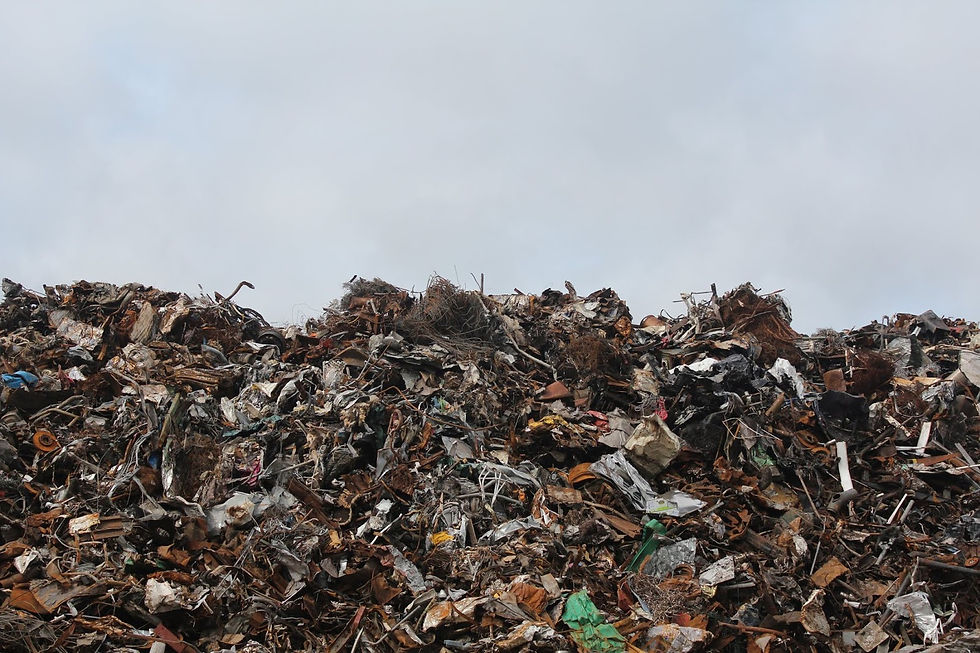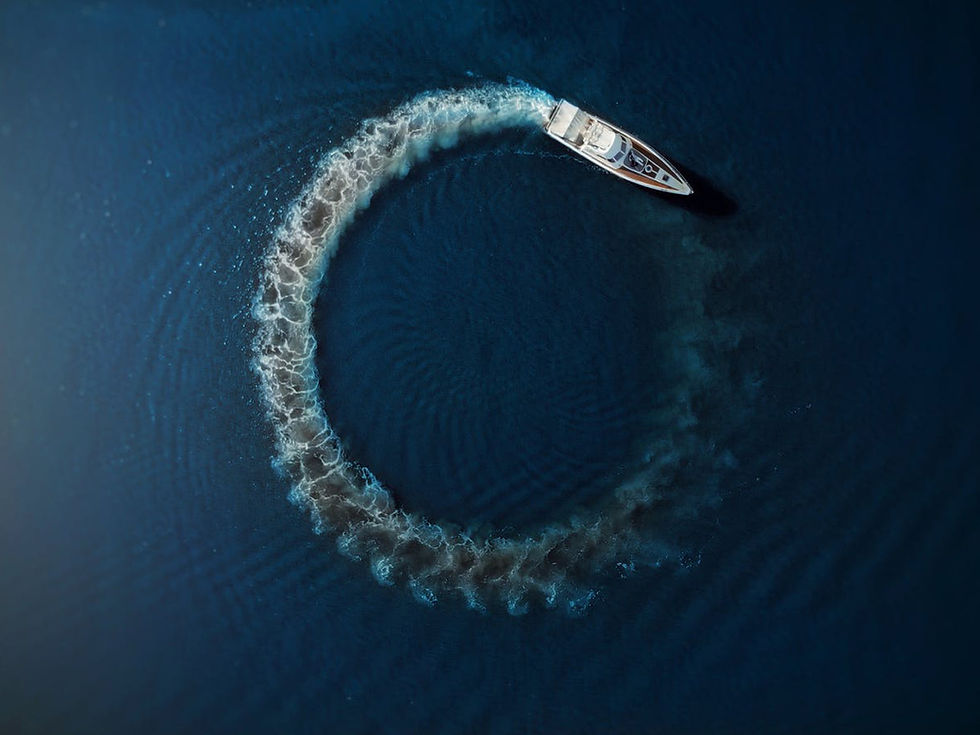What Lies Beneath South Patrick Shores: Environmental Contamination and Cancer Clusters
- Fight For Zero
- Sep 24
- 5 min read
By Stel Bailey | Investigative Report

The Untold Story of Florida’s Buried Military Legacy
On the shimmering Atlantic coastline of Florida, South Patrick Shores looks like a dream. Rows of pastel homes stand only blocks from the beach. Families fish in the surf, jog beneath palms, and sip coffee on sunlit porches. Yet beneath this postcard setting lies a mystery that has haunted the community for more than half a century: was this neighborhood built on top of a toxic military dump?
For decades, whispers of buried debris have resurfaced like ghosts from the past. Families report rare illnesses, barrels and batteries have surfaced during construction, and federal records hint at toxic dumping from World War II through the Cold War. Residents have long demanded answers. But the truth has remained buried, both literally and bureaucratically, under layers of dirt, denials, and delay.
Part I: Origins of a Hidden Dump
The story begins in the 1940s, when the U.S. Navy operated the Banana River Naval Air Station, a forerunner to Patrick Air Force Base. Wartime operations generated massive amounts of waste, chemical solvents, munitions debris, fuel, and firefighting foam, which were routinely discarded in landfills before modern environmental laws existed.
Archival newspapers confirm what workers quietly admitted: vehicles, barrels, and batteries were buried in the sands of South Patrick Shores long before homes were built. Former construction crews from the 1950s described unearthing military debris as foundations were laid.
By the early 1970s, the military had officially closed many of its landfills, covering them with thin soil layers, sometimes just a foot deep. No liners, no caps, no safeguards. The waste remained, free to leach into groundwater or resurface decades later.

Part II: The Human Toll Emerges
By the early 1990s, the consequences of these decisions began to reveal themselves. A startling number of Hodgkin’s Lymphoma cases emerged in South Patrick Shores—11 in a neighborhood of 3,000, plus 16 additional cases among base personnel. Statistically, epidemiologists expected two.
In 1991, the EPA sampled local wells. The findings were chilling:
Aluminum levels 2,000–3,000 times normal in one well.
Presence of PCBs, pesticides, and volatile organic compounds.
Elevated lead and other metals.
Part III: Patrick Air Force Base Under Fire
Patrick Air Force Base itself has long been identified as one of the nation’s most polluted installations. By the late 1980s, the EPA had flagged it as a Superfund candidate, with more than 30 toxic dumps on-site and at nearby Cape Canaveral.
Inspections by Florida’s Department of Environmental Protection documented violations ranging from improper hazardous waste storage to illegal disposal of toxic substances. In 2014, Patrick was cited for exceeding cadmium limits and mishandling toxic warfarin waste. Yet when inspectors returned in 2015, base officials denied them entry. The matter was later closed without enforcement.

Part IV: Grassroots Resistance and a Community Awakens
Despite government reassurances, residents refused to let the issue fade. In 2018, the Pentagon released a report confirming that Patrick Air Force Base had tested positive for PFAS chemicals—the toxic “forever chemicals” linked to cancer, thyroid disease, and reproductive harm.
Grassroots advocates, organized under the banner of Fight For Zero, began door-to-door canvassing. What they found was staggering: ALS, rare cancers, childhood asthma, thyroid disease, and reproductive disorders appeared at alarming rates. Across nearby Satellite Beach, more than 50 high school graduates were diagnosed with rare cancers within a decade.
The fight was no longer about suspicion; it was about survival.
Part V: The Bureaucracy
Through years of FOIA requests, interviews, and public meetings, one pattern became clear: a cycle of investigation, denial, and delay. Federal agencies often acknowledged contamination in abstract terms, yet declared little to no risk for residents. Cleanup actions were piecemeal, slow, and underfunded.
In 2019, after years of pressure, the U.S. Army Corps of Engineers finally designated South Patrick Shores as part of its Formerly Used Defense Sites (FUDS) program, a pathway to federal cleanup funding. But even this victory was tempered: actual remediation would require additional congressional approval, and as of 2021, only 30 percent of homeowners had permitted Corps investigators onto their property.
“The clock is ticking,” said one activist. “Our children are growing up on this land while Washington debates whether to study it further.”

Part VI: The National Context
South Patrick Shores is not an anomaly, it is part of a wider American reckoning. Across the country, from New York’s Love Canal to Washington D.C.’s toxic pits, former military and industrial sites have left behind legacies of illness and distrust.
The Department of Defense itself admits to 21 active cleanup sites at Patrick and more than 39,000 across the United States. Many remain under investigation, while others languish for decades awaiting funding.
What Lies Beneath, and What Lies Ahead
After years of research, interviews, and combing through declassified records, one truth is clear: South Patrick Shores was not just built on sand, it was built on secrets. Families bought their slice of paradise without knowing it sat atop decades of buried waste. And while officials debate the science and semantics of contamination, the residents continue to live the consequences.
The question that began in the 1950s—what lies beneath?—has never fully been answered. What is certain is that history has left a toxic imprint, one that demands accountability, transparency, and above all, justice for the people of South Patrick Shores.
Until then, this community’s dream remains shadowed by what lies beneath.
News Articles & Media Coverage
Florida Today (July 14, 1991): Hodgkin's Disease Strikes 6 Times in Neighborhood
Sun Sentinel (Aug 4, 1991): Hazardous Waste Disposal Plan Buried in Florida
Orlando Sentinel (Feb 23, 1992): Military Protected, Poisoned Florida
Orlando Sentinel (Mar 26, 1992): Patrick Set to Clean Up Toxic Dump
Florida Today (Mar 1, 2019): EPA Tests Soil in South Patrick Shores
Vero News (Mar 14, 2019): Concerned Resident’s Request Prompts EPA Tests for Contaminants
Government Reports & Agencies
EPA Superfund Site Information: Patrick Air Force Base (Feb 12, 1988)EPA Superfund Patrick AFB
Florida Health Department (Mar 8, 1992): South Patrick Shores Health ConsultationFL Health Dept. PDF
DoD Facilities on the RCRA GPRA Cleanup Baseline (Feb 2, 2005)
DOD Restoration Program: Defense Environmental Restoration Program DoD DERP Archives
EPA: Federal Agency Hazardous Waste Compliance Docket
EPA: National Biennial RCRA Hazardous Waste Report (2003 Data)
U.S. EPA (July 19, 2016): Patrick Air Force Base Penalty PaymentEPA Filing PDF
U.S. Army Corps of Engineers: Formerly Used Defense Sites (FUDS) Program
Banana River Naval Air Station FUDS Page
Patrick Air Force Base Documents
1988 Superfund Screening Report
AFFF (firefighting foam) Release Map
1972 Burial of Radioactive Waste Record
March DoD Report on PFOA and PFOS
2016 Penalty & Noncompliance Report
Toxic History Reports for Landfills #1, #2, and #3 (1984–1997 investigations)
Plate Shop Contamination Assessment (1995–1997 RCRA Facility Investigation)
Independent & Investigative Sources
ProPublica: 21 Active Military Cleanup Sites at Patrick AFB
The National Academies Press: Deep Buried Toxic Wastes
Soils.org: What Are Soil Contaminants?
Fight For Zero grassroots crowdsourced reports (community surveys, interviews, canvassing)
Other Documented Toxic Waste Cases (Comparisons)
The Buffalo News (2018): Love Canal Chemicals Still Making People Sick
Washingtonian (2013): The Toxic Waste Pit Next Door
CBRNE Portal: Disposal of Nuclear Waste into the World’s Oceans




Comments